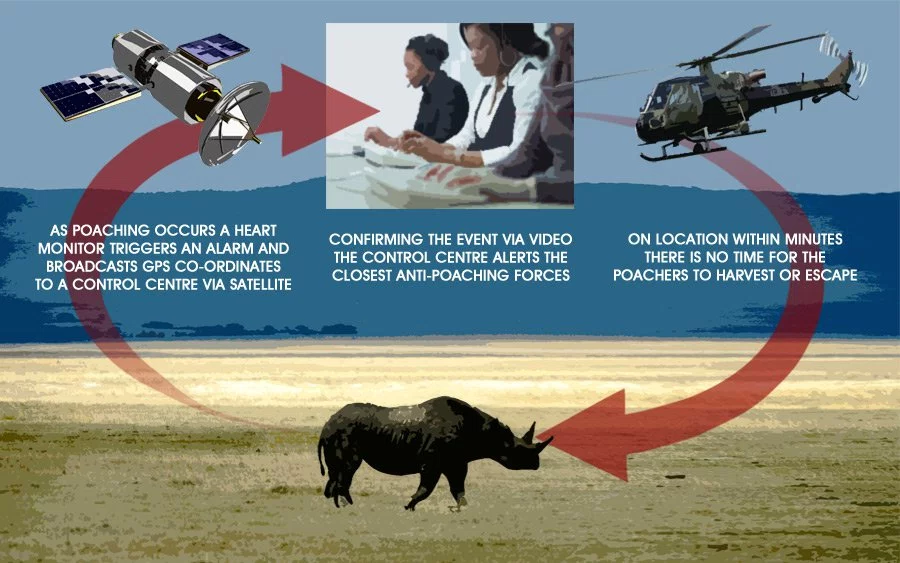How IoT is Used to Stop Poaching Animals
How IoT is Used to Stop Poaching Animals
- Last Updated: December 2, 2024
Yitaek Hwang
- Last Updated: December 2, 2024



Even though articles about poaching animals frequently pop up on my newsfeed, I didn’t realize the seriousness of the issue until I visited several safaris in Tanzania a couple of years back. Out of the big five safari animals — namely the lion, elephant, buffalo, rhino, and leopard — I only saw one lion and several elephants, and that was in a protected sanctuary.
In fact, the African Wildlife Foundation warns that at current poaching rates, elephants, rhinos, and other iconic African wildlife may be gone within our lifetime. Now IoT companies are working to change that.
The African Wildlife Foundation warns that at current poaching rates, elephants, rhinos, and other iconic African wildlife may be gone within our lifetime. Now IoT companies are working to change that.
Using LPWAN to Track and Protect Rhinos
In January, Semtech announced that they will be tracking rhinos using LoRa sensors on their horns in Tanzania. In a partnership with the Internet of Life and the ShadowView Foundation, LoRa devices were implanted in the rhino's horns to remotely track and respond to potential poaching incidents. Semtech’s efforts follow Quby’s sponsorship of the Things Network deployment in Zimbabwe to utilize LoRaWAN to track rhinos.
LPWAN providers, however, are not the only ones stepping up to protect endangered animals. Project RAPID (Real-time Anti-Poaching Intelligence Device) by International Humane Society is going further by deploying video cameras and heart rate monitors so that helicopters can be dispatched in response to poachers.

Image Credit: Fortune
Machine Learning Also Used in Conservation Efforts
Anti-poaching efforts aren’t limited to land animals — nor are we just relying on sensor data. Machine learning algorithms are being applied to predict the likelihood of attempts at poaching animals and detect illegal fishing attempts.
Selvam Velmurugan of Vulcan, a philanthropic-focused company founded by Microsoft co-founder Paul Allen, explains that his company’s software, Domain Awareness System (DAS), is used to respond to events in Kenya’s Lewa Wildlife Conservancy. DAS aggregates GPS readings, photos, weather conditions, and radio signals of nearby anti-poaching teams to provide an interactive dashboard to respond quickly to all security incidents. Vulcan also trains its DAS algorithms using past data about poaching animals to predict potential sites and dates when poaching animals is more likely to occur based on time of day, season, vegetation, and rainfall.
While DAS already oversees some 40,000 square miles of land across 15 parks, but what about the ocean? National Geographic reports that as much as 26 million tons of fish are caught illegally each year, accounting for more than 15% of total catches.
But Vulcan doesn’t need to use DAS to detect illegal fishing attempts. Velmurugan explains that by simply tracking the fishing boats using automatic identification signals that ships emit to prevent a collision, they can detect illegal fishing behaviors:
“Based on the tracks of a fishing boat, you can actually identify, with expert advice, whether the boat is illegal or not given its geographic location. For instance, fishing trawlers tend to track back and forth in transects. If we’re seeing this behavior within a marine protected area, we’ll know immediately that the boat is fishing illegally.”
As we transition into a more connected world, not only will IoT benefit humans, it can also benefit the many species that share this planet with us.
The Most Comprehensive IoT Newsletter for Enterprises
Showcasing the highest-quality content, resources, news, and insights from the world of the Internet of Things. Subscribe to remain informed and up-to-date.
New Podcast Episode

The State of Cybersecurity in IoT
Related Articles





